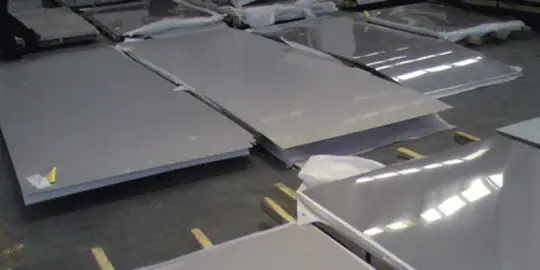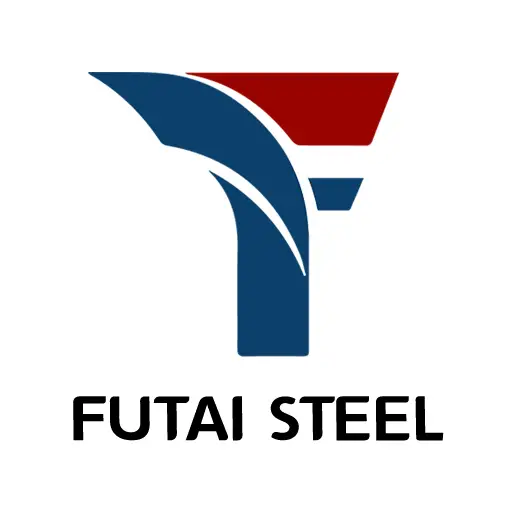7 Reasons Why Stainless Steel Pipe is the Best Choice
Table of Contents
Introduction


Stainless steel pipe is one of the most widely used materials in various industries today. Whether you are working on a construction project, setting up plumbing systems, or designing manufacturing equipment, stainless steel pipe provides a solution that guarantees both reliability and performance. Unlike other materials such as copper, plastic, or carbon steel, stainless steel pipes offer significant advantages that make them the material of choice for professionals.
In this blog post, we’ll explore the seven key reasons why stainless steel pipe stands out as the best choice. From durability and corrosion resistance to versatility and environmental sustainability, there are plenty of factors that make stainless steel the superior option. By understanding these seven reasons, you’ll be equipped to make a well-informed decision when purchasing stainless steel pipes for your next project.
NO 1. Superior Durability of Stainless Steel Pipe
When considering materials for industrial applications, one of the most critical factors to assess is durability. Stainless steel pipe, known for its toughness, stands out in environments where strength and reliability are paramount. It is resistant to mechanical wear, extreme temperatures, and corrosion, all of which contribute to its long lifespan.
Long-Lasting Performance
Stainless steel pipes can withstand prolonged exposure to harsh conditions without losing their structural integrity. This is particularly beneficial in industries such as construction, oil and gas, and food processing, where materials are exposed to extreme temperatures, moisture, and chemicals. While other materials might corrode or weaken over time, stainless steel pipes maintain their strength and functionality, ensuring that they last for decades without needing to be replaced.
Resistant to Rust and Corrosion
The corrosion-resistant properties of stainless steel are one of its most important attributes. Unlike carbon steel or copper, stainless steel pipes are immune to rust, ensuring the longevity of your system. Whether it’s dealing with the moisture in plumbing systems or exposed to industrial chemicals, stainless steel pipe is designed to endure without breaking down.
NO 2. Corrosion Resistance: Why It Matters
Corrosion is one of the most significant problems for piping materials, especially in plumbing and industrial systems. Corrosion can lead to leaks, contamination, and ultimately, costly repairs. This is where stainless steel pipe shines. Its high resistance to rust, oxidation, and corrosion makes it the best material for applications exposed to moisture, chemicals, and harsh environmental conditions.
High-Quality Corrosion Resistance
Stainless steel contains chromium, which reacts with oxygen to form a thin protective layer of chromium oxide. This layer prevents further corrosion and maintains the pipe’s strength and appearance. This makes stainless steel pipe ideal for long-term use in aggressive environments where other materials would typically fail.
Perfect for Harsh Industrial Environments
In industries such as chemical manufacturing, wastewater treatment, and even food processing, stainless steel pipe is the go-to material because of its ability to resist not just rust but also chemical corrosion. Stainless steel pipes can resist acids, bases, and other harsh chemicals, which would otherwise cause a significant amount of damage to lesser materials.
NO 3. High Strength-to-Weight Ratio of Stainless Steel Pipe

Stainless steel pipes are known for their high strength-to-weight ratio, meaning they are lighter than some other metals but still capable of supporting heavy loads and high pressure. This property makes stainless steel pipe an excellent choice for a variety of structural and non-structural applications.
Enhanced Structural Integrity
The high strength-to-weight ratio of stainless steel pipe allows it to withstand significant stress while being lighter than comparable alternatives. This is beneficial in industries where pipes are used as structural components or need to support heavy machinery or equipment. For instance, stainless steel pipes are used in the construction of bridges, tunnels, and skyscrapers, where both weight and strength are critical.
Versatility in Application
Whether it’s used for structural purposes or as part of a larger system, stainless steel pipe can be relied on to maintain its integrity without adding unnecessary weight. This makes it ideal for everything from plumbing systems to architectural supports.
NO 4. Aesthetic Appeal and Cleanliness
In addition to its technical properties, stainless steel pipe also provides aesthetic advantages, making it a popular choice for visible installations. The shiny, polished surface of stainless steel gives it a sleek, modern appearance, which is why it’s often chosen for visible structural elements in buildings, bridges, and even home decor.
Aesthetic Versatility
The aesthetic quality of stainless steel pipe is more than just skin deep. The surface of stainless steel is easy to polish and maintain, making it suitable for a wide range of applications where the appearance of the material is essential. It can be used as both a functional and decorative element, whether in public infrastructure or interior design.
Hygienic and Easy to Clean
Stainless steel pipe is also easy to clean, which is a key advantage in medical, food processing, and pharmaceutical applications where cleanliness is of utmost importance. Its smooth surface doesn’t allow dirt or grime to accumulate, ensuring a hygienic environment.
NO 5. Flexibility and Versatility in Applications
One of the biggest reasons why stainless steel pipe is favored across many industries is its versatility. Stainless steel pipes can be adapted to meet the requirements of various projects. Whether it’s for water systems, gas distribution, or industrial applications, stainless steel pipes are easy to fabricate and customize for different functions.
Adaptable to Different Environments
Stainless steel pipes come in various grades and specifications, allowing you to select the ideal material for your needs. The flexibility of stainless steel pipe makes it a viable option in a wide range of settings, from residential plumbing to high-pressure industrial systems.
Customizable Design
Many manufacturers offer custom stainless steel pipes that can be shaped, sized, and treated to suit the specific demands of your project. This adaptability makes stainless steel pipe a superior material choice for industries ranging from construction to aerospace.
NO 6. Sustainability and Environmental Benefits
Sustainability is a growing concern in modern industries, and stainless steel pipe offers a sustainable solution. Stainless steel is fully recyclable, which means it can be reused multiple times without losing its essential properties. Choosing stainless steel pipe over other materials is an eco-friendly choice that helps minimize waste and support sustainability efforts.
Recyclability
One of the best things about stainless steel pipe is that it’s 100% recyclable. Even when the pipe has outlived its original purpose, it can be melted down and repurposed without degradation in quality. This reduces the environmental impact of producing new materials and ensures that resources are conserved.
Energy Efficiency
Producing stainless steel uses less energy compared to other metals, which also contributes to its environmental benefits. Additionally, the long lifespan of stainless steel pipe means that fewer resources are needed over time for replacements and repairs, further reducing environmental impact.
NO 7. Cost-Effectiveness in the Long Run

While the initial cost of stainless steel pipe may be higher than alternatives like PVC or carbon steel, the long-term benefits make it a highly cost-effective choice. The longevity, low maintenance needs, and resistance to corrosion ensure that you won’t need to replace stainless steel pipes frequently, saving you money over time.
Value Over Time
Stainless steel pipe is an investment that pays off over time. The durability and reduced need for maintenance and repairs help offset the higher initial cost. In fact, stainless steel pipes can prove to be far cheaper than cheaper alternatives when considering the total cost of ownership, which includes maintenance and replacement costs.
Table: Comparison of Stainless Steel Pipe with Other Materials
| Feature | Stainless Steel Pipe | Copper Pipe | PVC Pipe | Carbon Steel Pipe |
|---|---|---|---|---|
| Durability | High | Moderate | Low | High |
| Corrosion Resistance | Excellent | Moderate | Low | Moderate |
| Strength-to-Weight Ratio | High | Moderate | Low | High |
| Aesthetic Appeal | Polished, Modern | Dull | Limited | Rusty |
| Flexibility and Versatility | High | Moderate | Low | Moderate |
| Sustainability | 100% recyclable | Limited | Limited | Limited |
| Long-Term Cost-Effectiveness | Very High | Moderate | Low | Moderate |
Conclusion
Choosing the right material for your piping system is crucial, and stainless steel pipe stands out as the best option for many applications. Its durability, corrosion resistance, strength-to-weight ratio, and versatility make it the ideal choice for industries that require reliability and performance. The added benefit of sustainability and long-term cost-effectiveness further solidifies its position as the superior material.
Investing in stainless steel pipe means investing in a long-lasting solution that will provide excellent service for years to come. Whether you’re involved in construction, manufacturing, plumbing, or any other industry, stainless steel pipe offers unparalleled advantages that can contribute to the success of your projects.
FAQ
Q1: How do I maintain stainless steel pipe?
Maintaining stainless steel pipe is straightforward. Regular cleaning with a non-abrasive cloth or sponge will keep the surface smooth and prevent buildup. Occasional inspections for wear and tear can ensure the pipe remains in top condition.
Q2: Is stainless steel pipe the best choice for plumbing systems?
Yes, stainless steel pipe is an excellent choice for plumbing due to its resistance to corrosion, durability, and ease of maintenance. It is particularly ideal for systems exposed to moisture or chemicals.
Q3: How much does stainless steel pipe cost compared to other materials?
While stainless steel pipe may have a higher initial cost than alternatives like PVC, its long lifespan and minimal maintenance needs make it a more cost-effective choice in the long term.
Q4: Can stainless steel pipe be used in food processing?
Yes, stainless steel is widely used in food processing due to its hygienic properties and resistance to corrosion and contamination.
Q5: How long does stainless steel pipe last?
Stainless steel pipe can last for decades, often exceeding 50 years or more, depending on the environmental conditions and proper maintenance.
